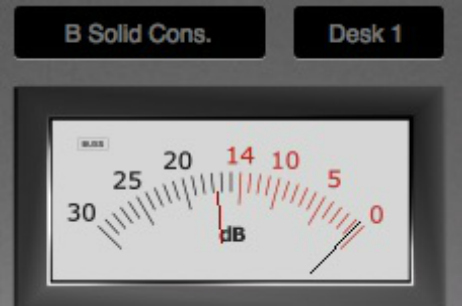In this tutorial we’re going to mix a rocking guitar riff with Strip and its complementary plugin Bus. Apart from incorporating various valuable mixing tools like EQ, compression, saturation, and so forth, these two plugins also have got the amazing ability to give every sound source a more organic, analog, and interesting vibe right out of the box.
Let’s listen to the unprocessed example first. The riff has been recorded twice with one signal panned left, and one panned right, for a bigger sound. A general low-cut filter at 100Hz has already removed all unwanted rumble from the low end and thus made room for the bass:
As you can hear, the guitars sound all but amazing – they’re pretty flat, boring, and just don’t sit well in the mix. Let’s see what we can do about that!
The Strip
Start by inserting an instance of Strip on each of the guitar tracks. The setup (guitar, amp, etc.) is identical for both recordings, which means we can simply create one preset in the first instance of the plugin and then load it into the second one, once we’re happy with the result.
First, choose B Solid Cons. from the drop-down menu at the top left. This gives the sound more edge and clarity straight away. Next adjust the (Input-)Gain so that the signal doesn’t reach 0dB (indicated by the black needle). In our case we turn down the knob just a little bit.
Now to the EQ section. Slightly boost the lows (LO) for a little bit more body, and then set the highs (HI) to about 10 o’clock. Make sure to change from Dynamic to Par Air in the HI-drop-down menu on the right. This will make the HI control behave similar to a parametric equalizer, giving you exact (or static) control over this frequency area. Leave MID and LO set to Static and Dynamic respectively, before boosting the mid frequencies around 1200Hz. This will enhance the original tone of the guitar and give it a little bit more weight.
Eventually, set XTALK to Med, which will enable some interesting cross-talk between both guitar channels.
The interface should now look something like this:
Bus
If you haven’t done so yet, route the two guitar tracks to a bus and open an instance of – you guessed it – Bus. Since the guitars are already pretty distorted, only a small amount of saturation (SAT) (around 11-12) will be enough to smoothly glue the signals together.
You don’t want to crush all the dynamics. Therefore, slowly turn down the threshold (THR) until you get an average gain reduction of 5dB (indicated by the red needle), and set RATIO to 3:1. To make sure the sound retains energy and impact, choose a medium ATTACK time of 18-19ms, and a very short RELEASE (0.10s). Use the MAKEUP control to, well, make up for the loss in volume during the compression stage.
Finally, turn up the SIDE-LO control at the bottom left about half way up. This will intelligently filter and process the low frequencies of the signal, resulting in an overall cleaner and more consistent sound – similar, but not identical to a common sidechain high pass filter.
The interface should now look something like this:
Please note: Each of Bus’ five models (selectable via the drop-down menu at the top) has its own, unique flavor – it’s worth flipping through them in order to find the one that suits your track best.
The Result
Now let’s listen to the final example:
As you can surely tell it’s really different as night and day: The guitars have got more bite, more presence, and the whole mix sounds less cluttered and simply more professional.
You can download the presets for Strip and Bus here: StripBus_Guitar_Riff_Presets


